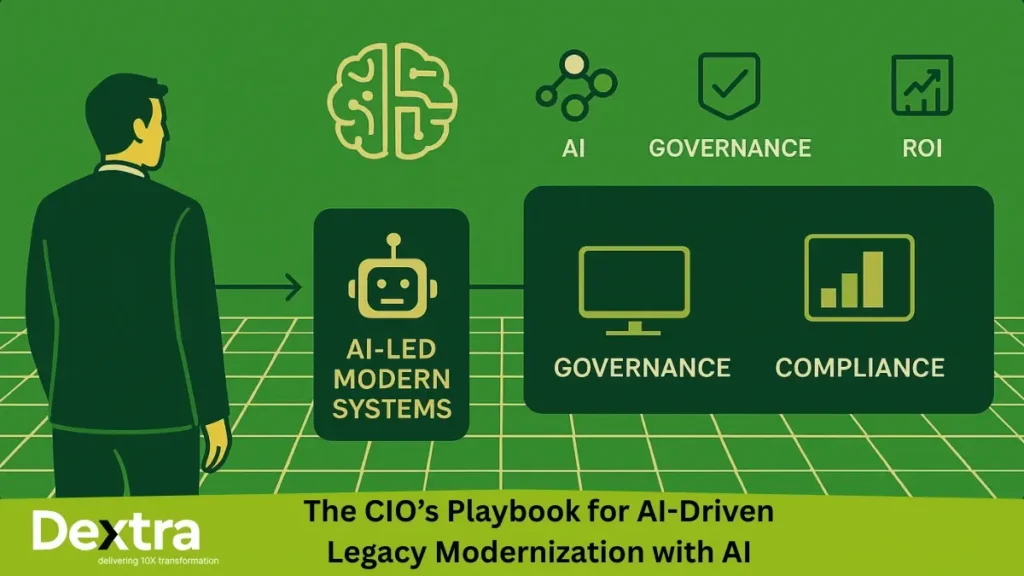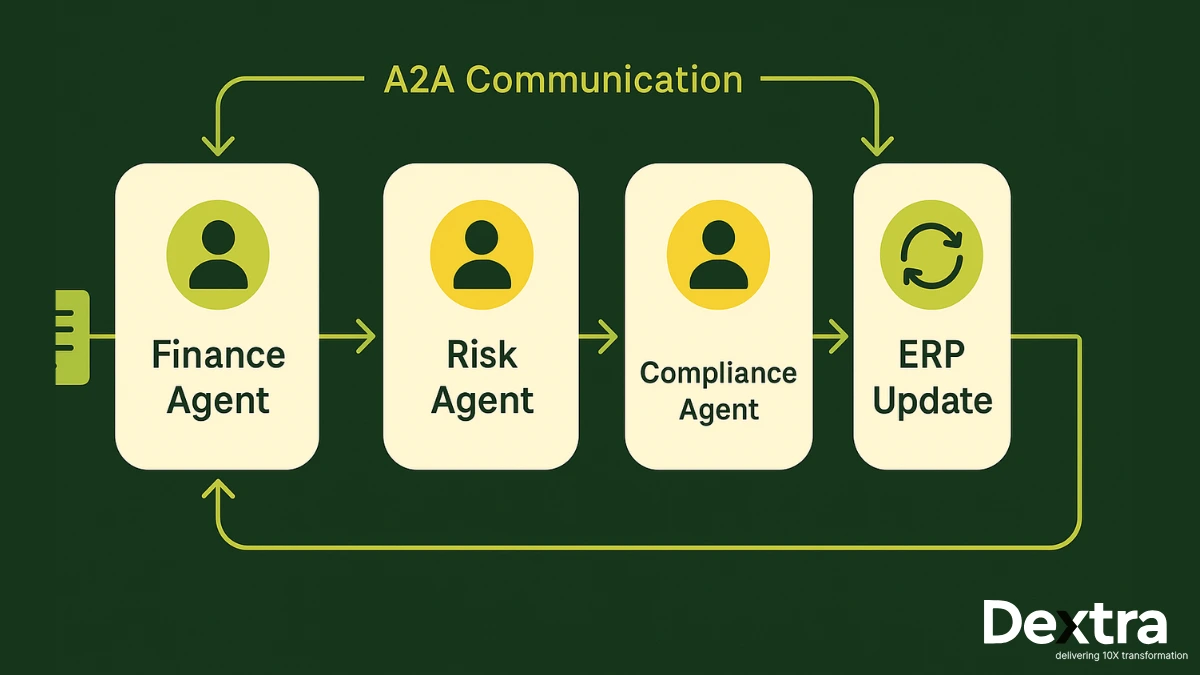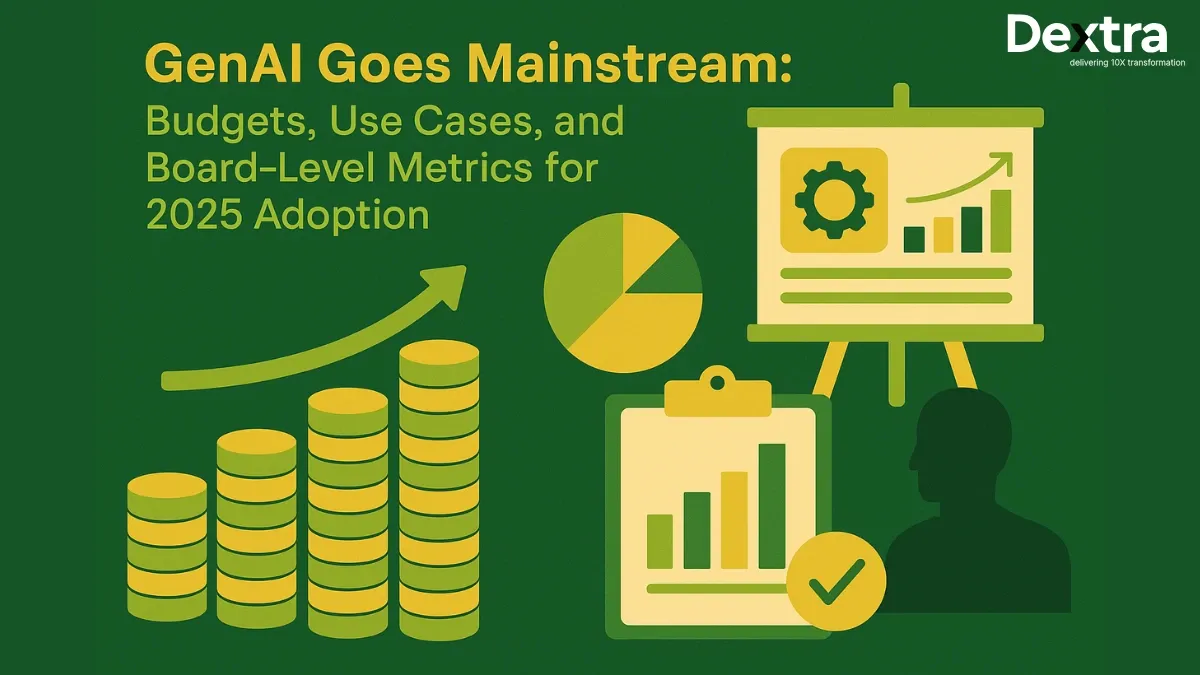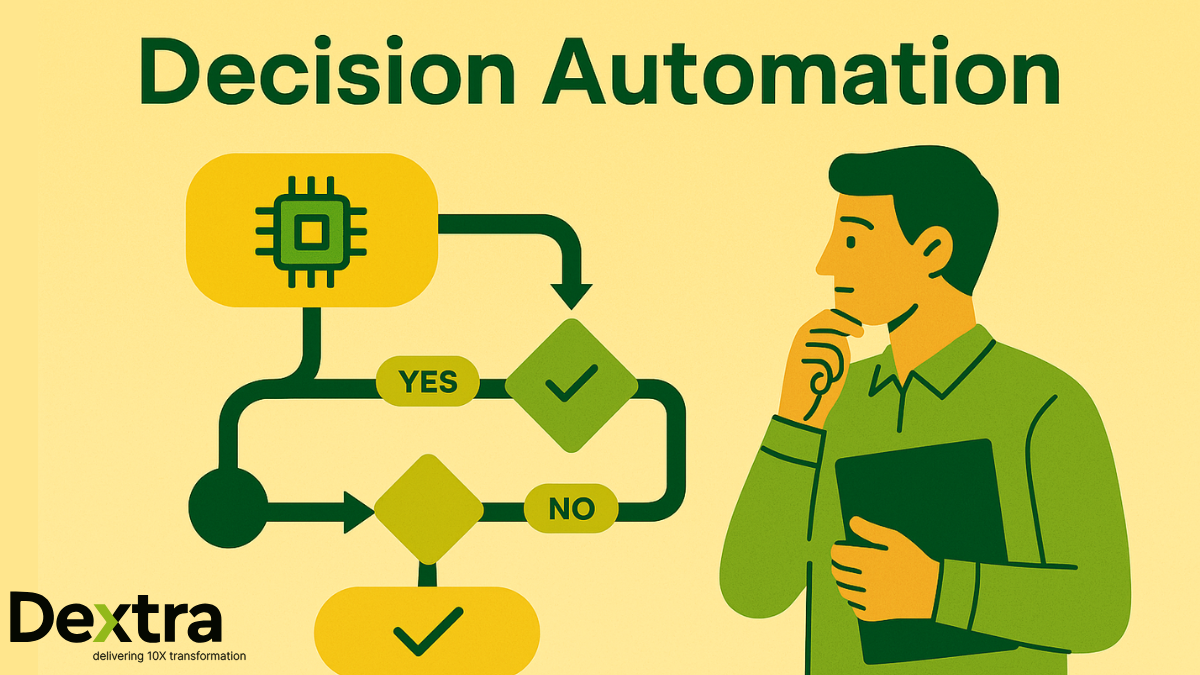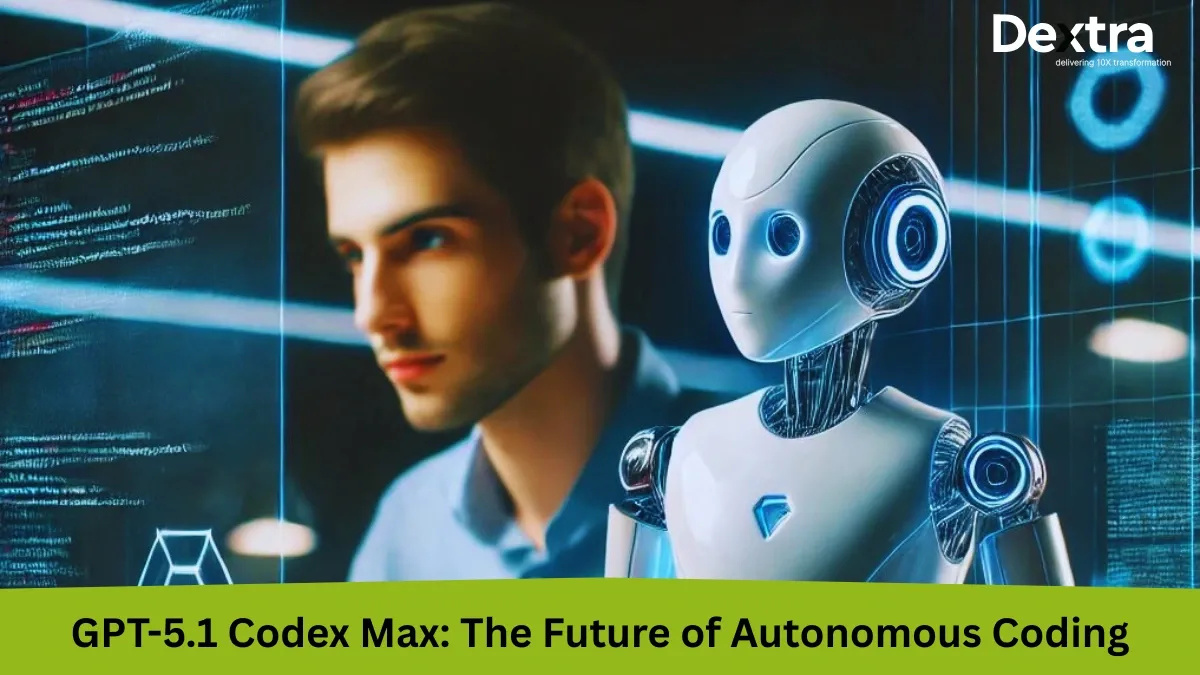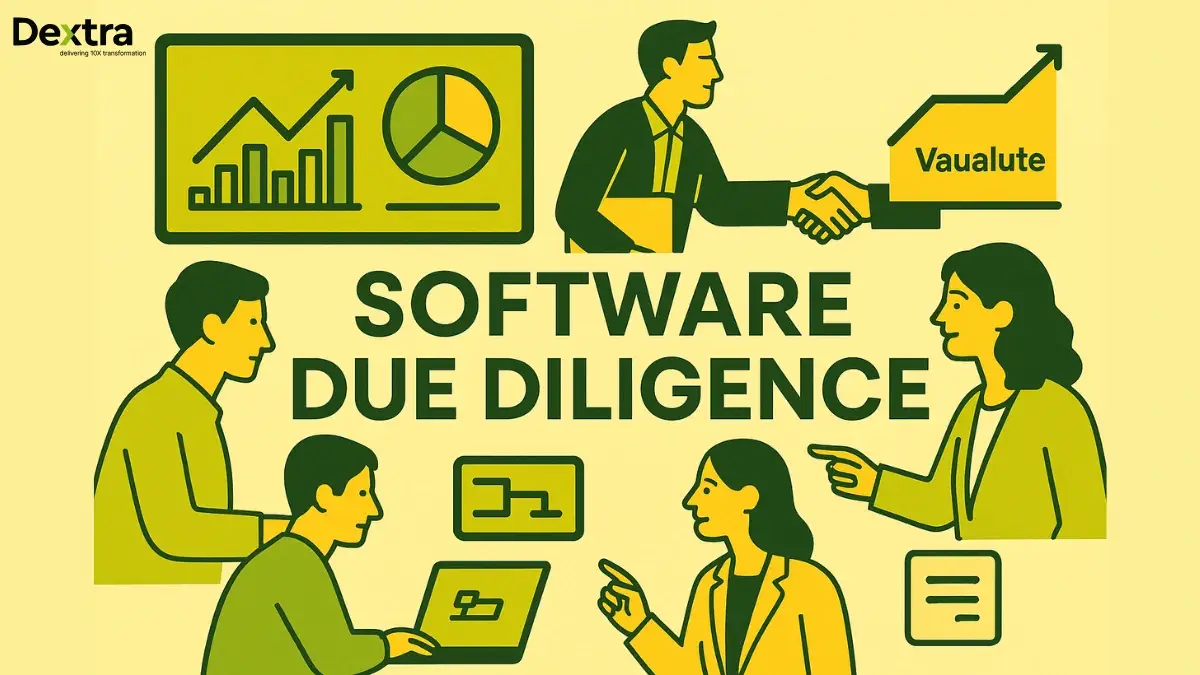As of 2025, CIOs are faced with the challenge of delivering faster digital transformation while also driving down costs and minimizing risk. Critical to a business’s operations, legacy systems are starting to create bottlenecks. Traditional migrations, often no more than a “code-and-load” transition, add technical debt and do not realize their new business value. The critical distinction between leaders and laggards is how they implement modernization now.
According to a recent study by McKinsey, AI-led modernization is changing the strategic landscape of enterprises. By leveraging legacy app modernization with AI, firms have been able to reduce timelines by 40–50% and reduce technical debt costs by almost 40%. That is powered by multi-agent workflows, outcome-oriented design, and governance frameworks that connect modernization to business outcomes. Furthermore, as per the Bain & Company technology report, enterprises that are able to institutionalize these activities unlock measurable EBITDA gains, while those stuck in experimentation risk falling behind.
Dextralabs plays a critical role in helping enterprises adopt an enterprise modernization strategy around agentic architectures, observability, and compliance-by-design. The playbook below provides CIOs with a structured approach to modernization, focusing on modernization ROI, architecture patterns, governance, and providing a 90-day roadmap that drives measurable value.
Modernize Your Legacy Systems — The AI Way
Empower your enterprise with Dextralabs’ AI-driven framework for faster, compliant, and ROI-focused modernization.
Start Your 60-Minute Readiness AssessmentWhy Modernize and Why Now?
The latest McKinsey Global Survey on AI finds that CIO mandates for 2025 have changed. Simply tinkering with AI tools is no longer sufficient. Boards and executive leadership expect modernization to demonstrate concrete benefits through measurement of modernization ROI, risk mitigation, and speed-to-value. AI has transitioned from a shiny toy to a mainstream operational capability. Organizations now need to integrate AI into workflows with measurable KPIs through legacy app modernization with AI.
Agentic AI, regarded as basic helpers only a short while ago, is now reengineering entire workflows end-to-end. This is going to require a renewed look at architecture, data access, and governance. Without these changes, companies risk technical failures, security breaches, and lost opportunities. Implementing an enterprise modernization strategy helps mitigate these risks effectively.
There are real costs to delaying modernization. With market leaders increasing the use of and codifying practices, the gap in performance between innovators and adopters continues to widen. When others are waiting, you are giving your competitors a head start in cost savings, efficiency, and responsiveness to market demands.
Code-and-Load Trap vs. Outcome-Focused Modernization
A prevalent trap in modernization is the code-and-load, where the goal is to translate legacy code to new languages line by line. This feels like progress, but only shifts technical debt to a new technical platform without improving outcomes. It also parallels the “lift-and-shift” trap many organizations fell into during their early cloud migration efforts.
Outcome-led modernization follows a different pathway, beginning with business intent analysis using logs, interviews, and legacy behavior. Leaders then determine the outcomes of everything and what can be kept, redesigned, or retired. This approach ensures modernization aligns directly with business value.
Dextralabs uses discovery agents to produce process maps in plain English, putting technical and business leaders on the same page with priorities. No wasted investment is made, along with speedy results that are connected to the measures KPI. This makes legacy app modernization with AI a value-focused, rather than code-focused, exercise.
| Aspect | Code-and-Load Trap | Outcome-Driven Modernization | Dextralabs Advantage |
| Main objective | Translate code into new languages/platforms, line-by-line | Align modernization with business outcomes and KPIs | Outcome-first approach tailored to enterprise KPIs |
| Technical debt | Only shifts technical debt to a new system | Acts to reduce and pay down technical debt | Discover, measure, and address duplicate processes |
| Approach | Concentrate on migrating the code only | Business intent analysis + outcome mapping | AI-powered discovery agents map processes in plain English |
| Business Involvement | Minimal—in essentially a technical exercise | Strong alignment with a business + IT leaders | Provides shared visibility for technical + business stakeholders |
| Efficiency | Seems quick but has hidden risks | Delivers measurable performance and faster ROI | 90-day plan to deliver speed-to-value |
| Risk Profile | High-risk technical failures with wasted cost | Lower risk with compliance, governance, and observability | Compliance-by-design + observability frameworks |
| Example Pitfall | Like some early “lift-and-shift” cloud migrations | Iterative modernization with outcome-first discovery | Stays away from lift-and-shift pitfalls and increases your modernization ROI |
ROI Benchmarks and Value Levers
CIOs often ask: “What ROI can modernization deliver? When executed with multi-agent “factories,” modernization programs achieve 40–50% faster delivery and significant reductions in technical debt.”
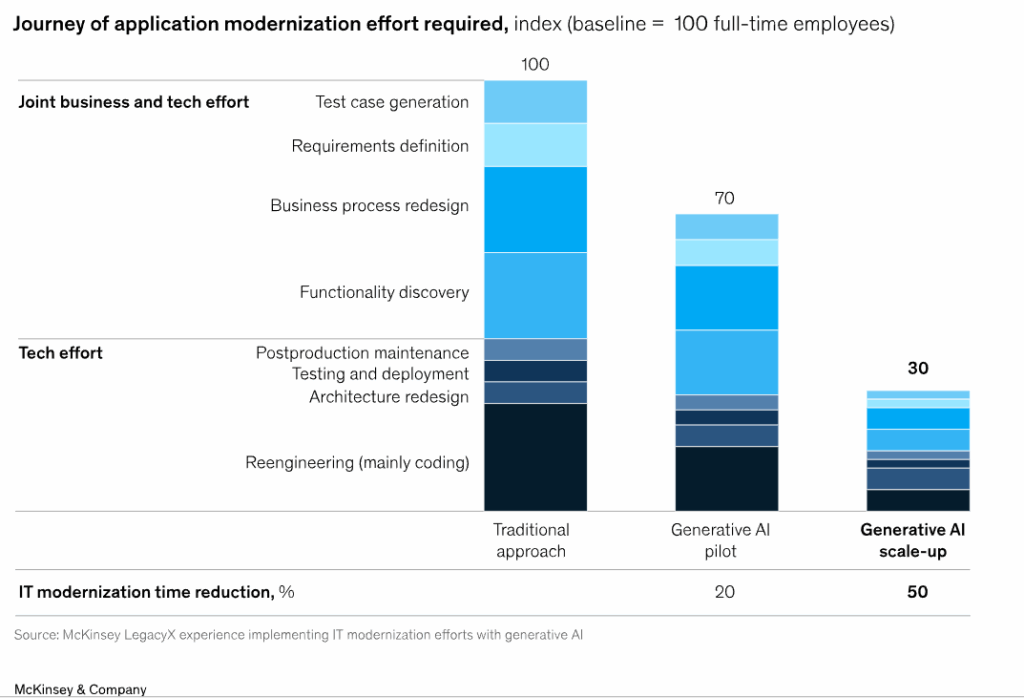
These gains, however, depend on governance, observability, and disciplined change management.
Companies that capture value focus on scaling practices such as:
- Clear roadmaps with measurable milestones.
- Executive sponsorship to drive cultural adoption.
- Workflow redesign with human-in-the-loop (HITL) oversight.
- Tracking and reporting standardized KPIs across projects.
Dextralabs quantifies ROI through metrics like cycle-time reduction, lower error rates, improved cost-to-serve, and capacity increases. Finance teams validate these outcomes with Total Cost of Ownership (TCO) models that compare refactoring, replatforming, and AI augmentation.
This data-driven approach ensures CIOs can present business cases backed by financial proof points, strengthening executive and board-level buy-in.
Also Read: Modernize, Don’t Rip‑and‑Replace: Layering LLMs Over Legacy ERPs and CRMs
Architecture Patterns That Work in 2025
As AI-driven changes increase, enterprises must build a strong architectural foundation to ensure their systems are scalable, flexible, and resilient. In 2025, three architecture patterns are emerging as especially effective for supporting legacy app modernization with AI:
1. Composable Architecture
Composable architecture emphasizes breaking applications into reusable modules or services. Rather than building monolithic/spaghetti-based systems, where components are tightly-coupled, enterprises can design the services based on discrete functions and assemble them in various ways to build the application.
Advantages:
- Flexible: Services can be independently and individually modified or replaced without impacting the whole system.
- Cost Efficiency: Modular upgrades minimize the required resources and system downtime for enhancements.
- Agility: Developers can rapidly assemble new applications by repurposing existing components, thus speeding up time-to-market.
2. Event-Driven Backbones
An event-driven architecture allows systems to respond to changes can look for changes in real-time as they happen. By treating events as triggers, AI agents can act upon new data immediately to facilitate different business functions in real-time.
Benefits:
- Real-time responsiveness: Action can be triggered and automated right away, improving operational efficiency.
- Scalability: Event-driven systems can handle a lot of interactions without slowing down.
- Decoupled: The ability to operate components independently decreases system complexity and improves maintainability.
3. Access to real-time data
AI requires timely and accurate data to function. Access to real-time data assures AI models and agents operate off the latest information, rather than delays or stale data, which can lead to usually less than desirable, sub-optimal results.
Together, AI code refactoring, microservices migration, and composable architecture play a foundational role in every enterprise modernization strategy.
Advantages:
- Accuracy: Decision-making occurs on live data/insights rather than stale data.
- Adaptability: Systems can dynamically adapt to changed business conditions.
- Customer Experience: Being responsive in the moment improves service quality and personalization.
Scaling the adoption of AI creates risks and challenges around discoverability, authorization, traceability, and explainability, and without these characteristics, managing thousands of agents becomes complex and risky.
Dextralabs overcomes these hurdles by building AI layers on platforms you already have, with the use of:
- API Facades to integrate existing business systems,
- Event Buses in real-time communication,
- Vectorized Knowledge Layers for efficient data access,
- Policy-as-Code Guardrails to protect data and comply with security and compliance,
Result: You will deploy AI quickly, modernize seamlessly, and achieve business continuity.
Operating Models and Governance
Modernization in organizations is not solely about adapting technology, but also about having firm governance in place. Simply rolling out a system or an AI tool is not the final goal; organizations must have structural processes, oversight, and accountability to ensure the value creation of modernization efforts.
In 2025, mature enterprises will be moving beyond independent pilot efforts and will be integrating legacy app modernization with AI and building a scalable enterprise modernization strategy into their operating model.
Key Pillars of Effective Governance
1. Executive Oversight
The role of senior leadership in enterprise modernization strategy can’t be overstated. By tracking key performance indicators (KPIs), outcomes, and milestones, executives keep programs aligned with the intended business objectives, which assists in accountability and supports the prioritization of initiatives with the greatest impact. Governance ensures that legacy app modernization with AI drives tangible outcomes like modernization ROI, scalability, and future-readiness.
2. Control of Risk
Contemporary systems, especially those supported by AI, involve risks in a way that traditional systems did not. Effective governance for enterprise modernization strategy will include the following:
- Observability: Continuous monitoring of the system performance and behaviors.
- Anomaly Detection: The early detection of unexpected outcomes, errors, etc.
- Human-in-the-Loop (HITL) Processes: Enabling a human to review and override critical decisions as needed.
Collectively, these elements help control risks for operations, ethics, and compliance, ensuring legacy app modernization with AI programs remains safe and sustainable.
3. Cost Discipline
Budget management is critical to sustainable modernization. Implementing cost monitoring, forecasting, and accountability into every project allows organizations to keep initiatives within budget and avoid unexpected overruns. This discipline enables better modernization ROI tracking, resource allocation, and prioritization of value-driven initiatives. By combining AI code refactoring, microservices migration, and composable architecture, CIOs create a foundation for an enterprise modernization strategy that scales effectively.
Dextralabs offers playbooks for LLMOps (Large Language Model Operations) and AgentOps to support CIOs and IT leaders in organizations who want to operationalize AI safely and efficiently. These playbooks cover:
- Prompt governance: Guaranteeing that AI outputs are managed, trustworthy, and comply with business policies.
- Evaluation frameworks: Evaluating the performance, quality, and impact of AI outputs against established KPIs.
- Cost observability: Reviewing the resources and associated costs used by AI for budget transparency and ROI evaluation.
With these governance guardrails, the organization can make AI programs predictable, compliant, and fundable so that modernization can scale confidently horizontally in departments without surprises.
Security, Compliance, and Audit Readiness
Organizations in regulated industries experience greater compliance expectations. Modernization not only needs to deliver performance but also must satisfy audit requirements. Key areas include:
- OWASP aligned controls to secure the development.
- Data boundaries to protect sensitive data.
- PII redaction and secrets hygiene to protect customer data.
- Policy-as-code frameworks to automatically enforce compliance.
Dextralabs has integrated these controls as fundamental elements of enterprise modernization, ensuring alignment with standards, such as SOC2 and ISO. Evaluation traces, red-team testing, and policy attestations are packaged as audit-ready evidence, facilitating CIO compliance for regulatory and board-level requirements during legacy app modernization with AI initiatives.
90-Day legacy app modernization with AI Playbook
For modern CIOs, speed is the new currency. Long, drawn-out modernization programs often become stalled in the absence of proof-of-value early on, and momentum is lost. Having a 90-day roadmap in place offers a structure to ensure that all parties can see visible progress, have measurable outcomes, and the executive team has confidence in your process. This playbook is designed to deliver quick wins while setting your organization up for success in scaling your work.
Days 0 – 30: Laying the Groundwork
The first 30 days are focused on clarity and alignment. CIOs can accomplish this by:
- Triage the legacy portfolio to identify systems likely to be modernized.
- Establish the value hypothesis by cataloging expected business functions.
- Retrieve legacy intent to maintain essential functionality.
- Evaluate data availability for extensibility and AI integration.
- Establishing KPI baselines to demonstrate impact and track modernization ROI.
This stage of the playbook helps assure that your modernization efforts begin with a defined purpose, measured trajectory, and clear justification roadmap.
Days 31–60: Construction and Testing
Execution occurs in the second phase and includes actual deliverables:
- Develop API facades and event streams to link traditional and digital technologies.
- Implement retrieval augmented generation (RAG) to surface insights from existing data.
- Establish monitoring and guardrails to assure reliability and compliance in operation.
- Testing one high-value workflow to showcase legacy app modernization with AI benefits.
This builds momentum and confidence among stakeholders while reinforcing the role of AI code refactoring and microservices migration in modernization.
Days 61-90: Proving Value and Scaling
The final stage is focused on validating the value and scalability of the initiative:
- Proving modernization ROI with pilot metrics to secure expanded funding.
- Achieve hardening and change control to solidify the duration.
- Expand into 2 to 3 adjacent workflows to create a wider-scale initiative.
- Present the executive-scale roadmap for scalability to secure the next phase of funding.
Dextralabs helps accelerate the value-and-scaling journey by providing doc-ready templates, automation tools, and reporting for executive-level usage and modernization initiatives, enabling CIOs to modernize quickly without disrupting the business.
Build vs. Buy vs. Integrate: A CFO’s Lens
Modernization requires strategic decisions about which AI model to adopt and how to balance the implications of privacy, cost, and speed. For a CFO, the decision will impact total cost of ownership (TCO), compliance risk, and modernization ROI. CIOs generally consider three models, or categories of models—closed, open, and small, each impacting enterprise modernization strategy differently.
An Overview of Options
| Options | Strengths | Risks/Trade-offs |
| Closed Models | Excellent privacy and securitySupport from enterprise vendorsStrong compliance alignment | Higher licensing and usage costsLess flexible and risk of vendor lock-in |
| Open Models | Customizable and adaptableLower capital cost up frontLess dependent on a vendor | Greater integration efforts are neededSecurity and compliance risk if not managed |
| Small Models | Fast and lightweightCost-effective for particular workflowsReal-time or edge applications | Limited scope, nearly always domain-specificDifficult to scale across the enterprise |
Dextralabs provides CIOs and CFOs with assurance to make these decisions by providing the following:
- Model Selection Frameworks weighing performance, privacy, and costs.
- Cost-Control Strategies for predictable budgeting and ROI.
- Architecture Roadmaps tailored for hybrid and multi-cloud ecosystems with future flexibility.
This structured approach for enterprises enables faster modernization, governing AI adoption, and delivering specific, measurable business value.
Dextralabs Solution
At Dextralabs, legacy app modernization with AI isn’t just about using the latest technology; it’s about balancing technology innovation with enterprise constraints like compliance, cost control, and operational resilience. Our Solution Blueprint provides enterprises with a structured way to come up with a solution to modernize while still ensuring measurable business outcomes.
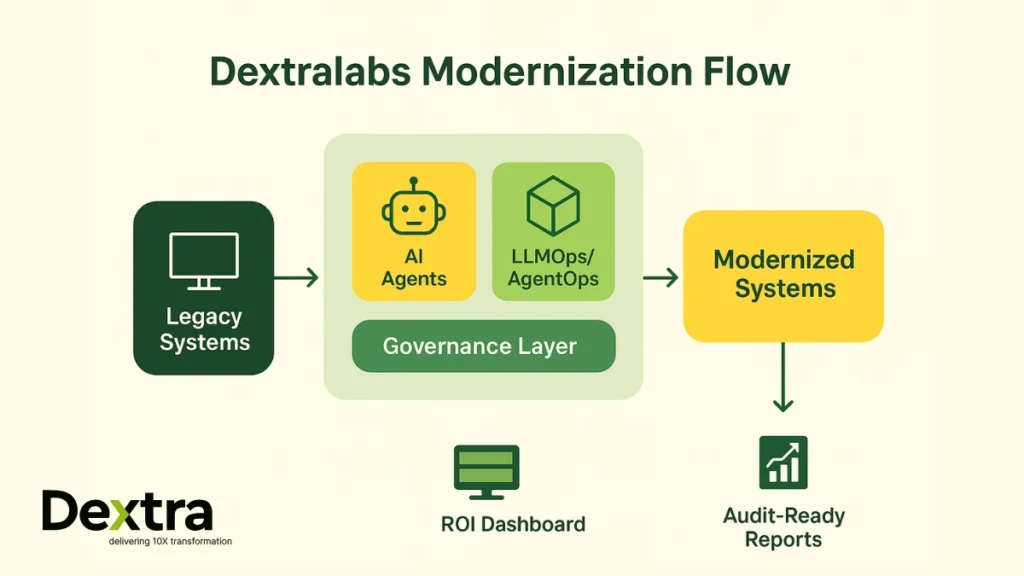
Our Services:
We design modernization pathways where AI agents serve as co-pilots across finance, customer operations, employee operations, IT, and supply chain. This ensures automation and augmentation are introduced in a controlled, business-user-aligned manner—always tied to a broader enterprise modernization strategy.
- Legacy Aware Integration Patterns
Rather than “rip-and-replace”, Dextralabs brings in modern AI and LLM-driven systems into existing legacy architectures. This creates less disruption, protects existing investments, and accelerates legacy app modernization with AI while improving modernization ROI.
- LLM and Agent Platforms
We deploy scalable platforms that inherently support both LLMs and multi-agent ecosystems to allow enterprises to realize the best generative AI and automation experience at scale. These platforms align with an enterprise modernization strategy, creating room for future-ready transformations such as AI code refactoring and microservices migration.
- LLMOps and AgentOps
Our operational frameworks ensure ongoing monitoring, fine-tuning, and governance of LLMs and AI agents, while keeping deployments safe, reliable, and cost-effective. The ability to manage modernization at scale ensures legacy app modernization with AI produces measurable results.
- Observability and Compliance Engineering
Dextralabs builds observability from day one, allowing easy tracking of AI, biases, and compliance metrics with transparency and evident audit-readiness. Combining would be a challenge to accumulate datasets to get a baseline when deploying. This builds regulatory alignment as a part of the process, rather than an afterthought.
Our Approach
- Outcome-First Discovery – Every partnership starts with establishing clear business outcomes (i.e., reducing cycle time, improving compliance, and customer satisfaction). This step guarantees that AI adoption is directly related to some form of measurable value.
- Guardrails by Design – Safety, privacy, and governance are built into every architecture. Whether it’s role-based security for access control, compliance automation, or responsible and sustainable AI, we help enterprises gain the confidence to scale AI responsibly.
- Progressive Rollout – Rather than deploying in a high-risk “big bang” transformation, Dextralabs believes in deploying AI as a phased rollout, where we pilot our solution in targeted domains to understand our solution performance, eventually scaling enterprise-wide.
- Finance-Validated ROI Tracking– By tracking finance-aligned metrics such as cost avoidance, productivity, or payback periods, leadership can justify investments with confidence.
Proof of Impact
- 40-50% Faster
When prerequisites such as clean data and API-ready systems are satisfied, clients see modernization accelerated by a factor of 40-50% compared to traditional methods.
- Clear KPIs
Every project is bound by clear KPIs across efficiency, cost optimization, compliance, and adoption, giving all stakeholders visibility.
- Audit-Ready Evidence
Built-in observability and compliance controls will generate an audit trail for every decision made while deploying, to ensure the enterprise is ready for an internal audit and external audit.
- A Scalable Roadmap by Day 90
In 90 days, the enterprise will have live pilots and a scalable roadmap to accommodate hybrid/multi-cloud environments for their future enterprise infrastructure modernization plans.
The Dextralabs Solution Blueprint assists in enabling enterprises to modernize with speed, safety, and financial accountability. This ensures innovation achieves real, measurable business impact and aligns with long-term enterprise modernization strategy goals.
CTA and Next Steps
Modernization will not be confusing. With the right expertise and a structured approach, it can generate quick and measurable results. Dextralabs allows CIOs to start with confidence by offering a complimentary 60-minute Modernization Readiness Assessment. It’s a solid first step to converting your legacy app modernization with an AI roadmap into reality.
What You Can Expect:
- KPI Baseline Template to help track ongoing progress from day one.
- Architecture Readiness Briefing to help find gaps and opportunities in systems.
- A 90-Day Customized Pilot Plan to create quick wins and executive-ready reports.
Exclusive CIO Assets:
- Complimentary RFP Checklist for supplier assessments.
- Cost Evaluation Tool to outline investments and ROI.
- Governance Starter Package to assist in forming compliance frameworks.
What’s Next:
Set up a discovery call, generate a personalized roadmap, and show ROI in 90 days. Partner with Dextralabs to make legacy app modernization with AI predictable, compliant, and value-based.
Conclusion
In 2025, modernization through AI is no longer a choice—it is a competitive necessity. Many legacy systems are unable to keep pace with the speed, scale, and complexity of today’s business challenges, and much modern migration work fails to deliver measurable value. Modern organizations are turning to AI code refactoring, microservices migration, and composable architectures so that they can move into a place of innovation faster with less operational risk and less cost.
The path for success is a simple playbook:
- Begin with outcome-led modernization, ensuring the work can always be linked back to business objectives.
- Embed governance and compliance frameworks from day one in order to maintain visibility and auditability.
- Use an agentic AI architecture that supports scaling quickly and safely across departments and workflows.
Organizations that focus on the playbook step not only improve efficiency and agility, but they will also create space for strategic advantage in a fast-changing market. In short, the winners will be the most thoughtful, smart, and quickest organizations.

